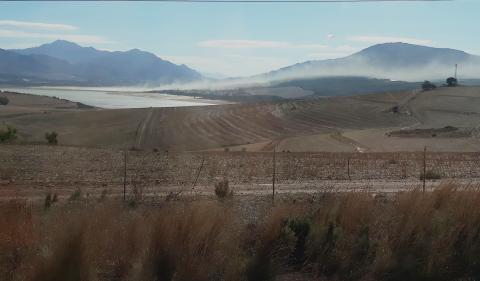This is an article I wrote on invitation from Bulletin of Atomic Scientist (weird, I know, but physicists are very interested in changing climate, and from that – it is not a long road to our drought). I look here at the drought from the perspective of a couple of months. The story is written for the primarily American audience, but I hope it brings something for each of us. Enjoy!
Cape Town, the iconic city on the tip of Africa, has recently added a new term to the English vocabulary—Day Zero, or the day when all the taps run dry. For a couple of months in late 2017 and early 2018, this term was the topic of almost every conversation among the city’s approximately 4 million residents, as well as the subject of a multitude of news articles, interviews, opinion pieces, editorials, blogs, and tweets—not just in South Africa, but all around the world.
The term Day Zero refers to a situation where the city’s water reserves reach such a low level that the continuation of what is considered to be a “normal” supply to all users is no longer possible, and the whole system is shut down. Instead, water would have had to be provided through a number of distribution points, with individuals restricted to collecting a daily ration of perhaps only 25 liters (just over six-and-a-half gallons) of the precious liquid. As of the time of writing (April 2018), Day Zero has been largely staved off, but it still remains a possibility, depending on the coming season’s rainfall and the water-saving behavior of the city’s residents. (To give an idea of how close a shave it’s been, as of April 16, measurements taken at the city’s largest reservoir—the Theewaterskloof Dam—show it at only 10.4 percent of capacity. A photo taken by a colleague last Wednesday shows a dust cloud lifted by wind over the dry part of this reservoir, with just a little water visible in the deepest section.)
How did Day Zero come about? How is it possible that a large modern city—a vital economic, tourism, and cultural hub of South Africa, that has been likened to Africa’s version of San Francisco—was about to run out of water? Particularly when outside observers have noted that South Africa has a strong record for addressing previously unmet needs for water and sanitation? And is Cape Town still threatened by the prospect of running out?
…
Read the rest of the story in the Bulletin for Atomic Scientist
